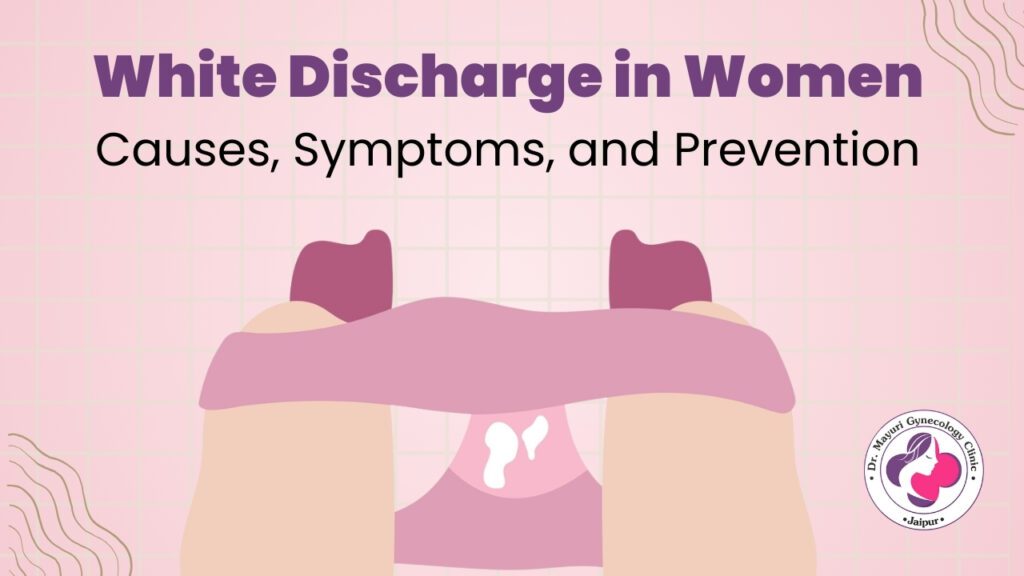White Discharge in Women – Causes, Symptoms, and Prevention

White discharge is a common experience for many women at different stages of their lives. While it is often a natural and healthy process, it can sometimes cause confusion or concern, especially when accompanied by other symptoms. Understanding what causes white discharge, recognizing when it is normal, and knowing how to prevent infections can help women take better care of their intimate health. This blog explains everything you need to know about white discharge so you can feel confident about your body and make informed choices.
What Is White Discharge?
White discharge is a natural vaginal fluid. It mainly consists of water, mucus, dead cells, and healthy bacteria. These elements work together to keep the vaginal environment clean, flush out unwanted particles, and prevent infections.
The vagina has its own ecosystem, with beneficial bacteria like Lactobacillus helping maintain the right pH balance and protect against harmful germs. A small amount of discharge is normal and shows that your body is functioning well.
When Is White Discharge Normal?
White discharge does not always signal a problem. Many women experience changes in discharge that are completely normal due to hormonal shifts or other factors.
Healthy discharge is usually:
- Clear or white in appearance.
- Has little to no odor
- Feels smooth, slippery, or slightly thick
- Doesn’t cause irritation, itching, or pain
- May increase during pregnancy, ovulation, or while using hormonal contraceptives
If you notice these characteristics and feel no discomfort, your discharge is likely part of your body’s natural cycle.
When Is White Discharge Abnormal?
White discharge may be abnormal if it is accompanied by changes in appearance, smell, or discomfort. Watch out for the following warning signs:
- Foul or unusual odor
- Yellow, green, or grey discharge
- Thick, curd-like, or bubbly texture
- Itching, burning, or redness around the vagina
- Pain during urination or intercourse
- Sores, rashes, or irritation around the genitals
- Swelling or tenderness
- Fever or abdominal discomfort
These symptoms might indicate infections or health issues requiring medical care.
Common Causes of White Discharge
1. Infections
Infections are one of the main reasons for abnormal discharge. These may include:
- Bacterial vaginosis – an imbalance of bacteria
- Yeast infections – Yeast infections caused by excessive growth of Candida fungi.
- Sexually transmitted infections – like chlamydia or gonorrhea.
These infections can cause discomfort, abnormal discharge, and other symptoms needing treatment.
2. Allergic Reactions
Some products may irritate the vaginal area and cause discharge, including:
- Scented pads, tampons, or wipes
- Creams, lotions, or soaps with fragrances or chemicals
- Latex condoms
These can trigger allergic reactions, leading to irritation and abnormal discharge.
3. Hormonal Changes
Hormones influence discharge patterns. Pregnancy, menopause, or birth control use may temporarily alter discharge.
4. Poor Hygiene
Improper cleaning or overwashing can disturb the natural balance of bacteria, making the area vulnerable to infections.
How to Prevent Abnormal White Discharge
Taking simple steps in your daily routine can help prevent infections and support vaginal health. Here’s how:
1. Practice Good Hygiene
- Wash the intimate area once or twice a day with lukewarm water
- Use gentle, fragrance-free cleansers made for sensitive areas
- Avoid strong or scented products that can cause irritation
2. Dry the Area Gently
Dry the area gently after washing to avoid spreading bacteria.
3. Wear Comfortable Clothing
Choose breathable cotton underwear and avoid tight or synthetic fabrics that trap moisture.
4. Change Pads and Tampons Frequently
During menstruation, change sanitary pads or tampons every 3–4 hours to prevent bacterial growth and irritation.
5. Practice Safe Sex
Always use condoms during intercourse to reduce the risk of sexually transmitted infections and other infections caused by exposure to bodily fluids.
6. Avoid Overwashing
Frequent washing can strip away healthy bacteria, making you more prone to infections. Limit washing to once or twice daily.
7. Avoid Irritating Products
Skip scented wipes, powders, and creams that can disrupt the natural pH balance of the vagina.
8. Stay Hydrated and Eat Nutritious Food
A balanced diet and plenty of water support your immune system and help maintain healthy bacteria in the vagina.
9. Seek Medical Advice When Needed
If you experience unusual discharge, odor, or discomfort, consult a qualified gynecologist. Self-treatment is not recommended as different infections require different approaches.
Conclusion
White discharge is a normal part of a woman’s reproductive health, but it’s essential to distinguish between healthy and abnormal discharge. Understanding the causes, symptoms, and prevention methods helps maintain intimate health confidently.
Simple practices like good hygiene, wearing breathable clothing, using safe products, and staying hydrated can help you prevent infections. If you notice unusual discharge or feel uneasy, don’t hesitate to consult a healthcare expert.
Listening to your body, knowing what’s normal, and addressing concerns early will help you stay healthy and empowered every day. Stay informed and prioritize your well-being.


